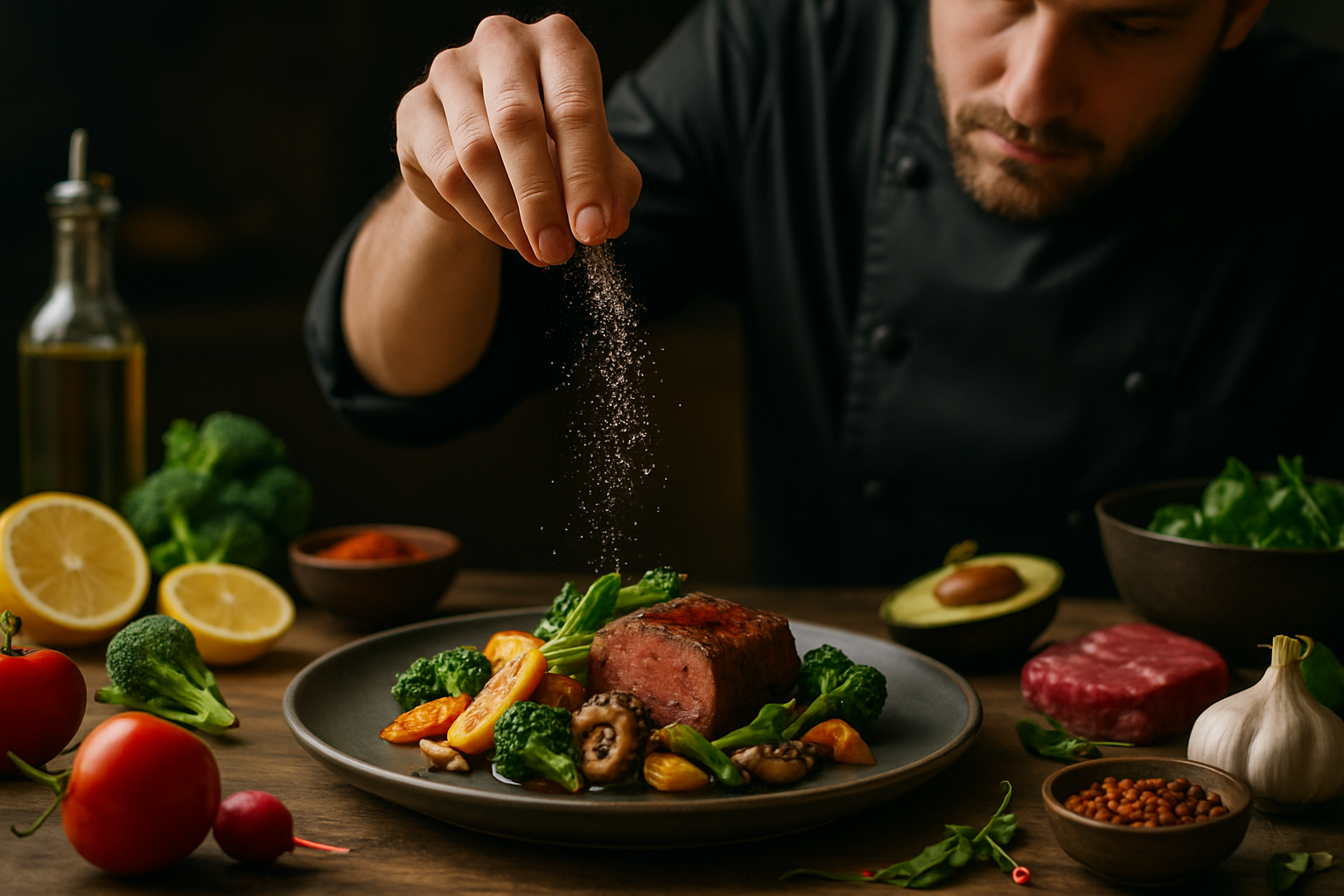Culinary Alchemy: Transforming Trash into Gourmet Treasures
Prepare to embark on a mind-bending culinary journey where waste becomes wonder, and discarded ingredients are reborn as gastronomic marvels. In this article, we'll explore the innovative world of trash-to-table cuisine, where chefs are pushing the boundaries of sustainability and creativity to craft exquisite dishes from what others might consider garbage. Get ready to challenge your perceptions and discover the hidden potential in your kitchen scraps!

From Peel to Plate: Vegetable Scraps Reborn
Vegetable peels, stems, and leaves are no longer destined for the compost heap. Innovative chefs are turning these overlooked parts into crunchy chips, flavorful powders, and unexpected garnishes. Carrot tops become vibrant pestos, while potato peels are transformed into crispy snacks that rival any store-bought chip. Even watermelon rinds find new life as tangy pickles or refreshing granitas. By utilizing every part of the vegetable, chefs not only reduce waste but also introduce diners to new textures and flavors they might never have experienced otherwise. This approach not only maximizes the use of ingredients but also challenges us to rethink what we consider edible and delicious.
Bone Broth 2.0: Extracting Liquid Gold
Fish bones, chicken carcasses, and meat trimmings are being given a second life in the world of trash-to-table cuisine. Instead of discarding these often-overlooked parts, chefs are using them to create rich, flavorful broths and stocks that serve as the foundation for countless dishes. But they’re not stopping there – these broths are being clarified, gelled, and even turned into powders that can be reconstituted on demand. The result is a concentrated essence of flavor that can elevate any dish, from soups and sauces to molecular gastronomy creations. This approach not only reduces waste but also pays homage to traditional cooking methods that have always emphasized using every part of an animal.
Sweet Transformations: Desserts from Discards
Even the world of pastry and desserts is embracing the trash-to-table movement. Fruit peels, typically discarded, are being candied, dehydrated, or infused into syrups to add complex flavors to sweet treats. Spent coffee grounds find new life in rich chocolate truffles, while whey – a byproduct of cheese-making – is transformed into delicate mousses and ice creams. These innovative desserts not only reduce waste but also introduce diners to new flavor combinations and textures. By reimagining what can be used in desserts, pastry chefs are pushing the boundaries of what’s possible in the world of sweets.
The Science of Flavor Extraction
Behind the creativity of trash-to-table cuisine lies a deep understanding of food science and flavor extraction techniques. Chefs are employing methods like fermentation, dehydration, and molecular gastronomy to unlock the hidden potential in discarded ingredients. For example, leftover bread crusts might be fermented to create a unique vinegar, or fish scales could be dehydrated and ground into a umami-rich powder. These scientific approaches not only maximize the use of ingredients but also create entirely new flavor profiles that can’t be replicated with traditional cooking methods. By combining creativity with scientific knowledge, chefs are revolutionizing the way we think about food and flavor.
Trash-to-Table Tips & Facts
• Up to 40% of food in the United States goes uneaten, with much of it ending up in landfills.
• Vegetable peels often contain more nutrients and fiber than the flesh of the vegetable.
• Fermenting food scraps can increase their nutritional value and create new, complex flavors.
• Many Michelin-starred restaurants now incorporate trash-to-table principles in their menus.
• Using every part of an ingredient can significantly reduce a restaurant’s food costs.
In conclusion, the trash-to-table movement is more than just a trend – it’s a revolution in the way we think about food, waste, and creativity in the kitchen. By challenging our preconceptions about what’s edible and delicious, these innovative chefs are not only reducing waste but also expanding our culinary horizons. As this movement continues to grow, we can look forward to a future where sustainability and gastronomic excellence go hand in hand, transforming our kitchens and our palates in the process. So the next time you’re about to toss those veggie scraps or fish bones, remember: in the right hands, today’s trash could become tomorrow’s culinary treasure.





